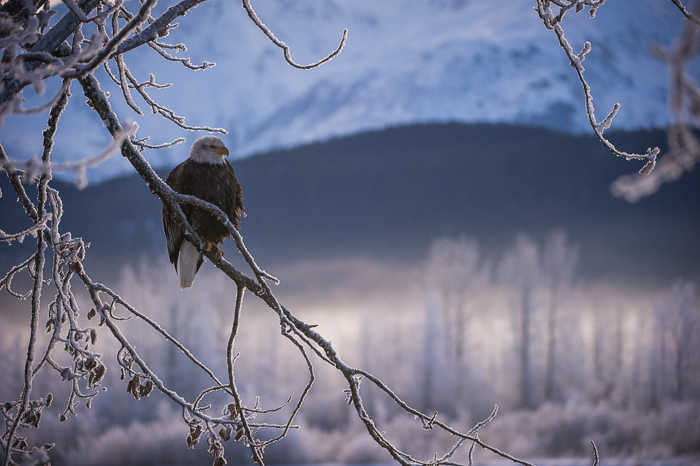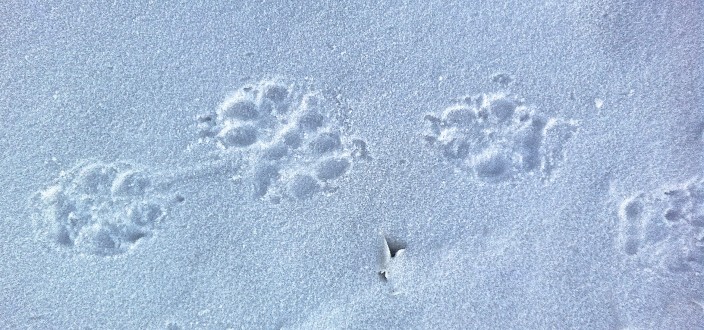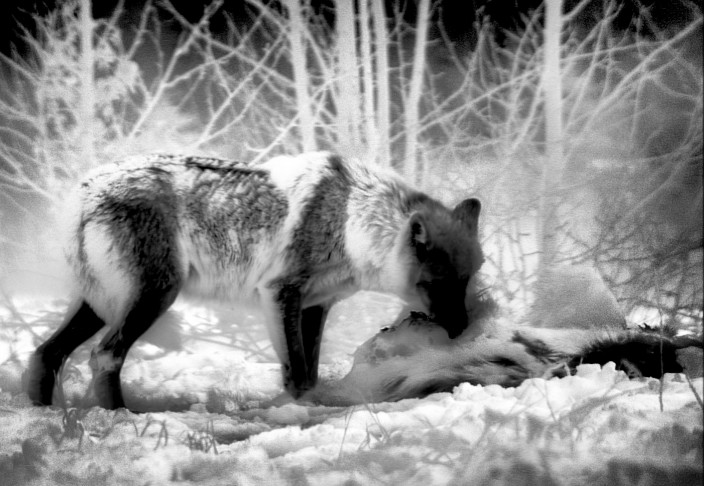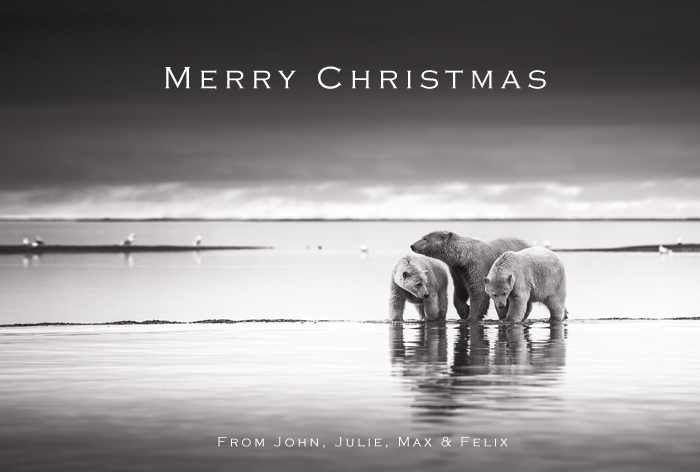Home at last from my last shoot of 2013. It’s been a fantastic year of filming – everything from Chimpanzees in Senegal to Hermit Crabs in Belize, Lions in the Masai Mara to wolves in Alaska. Lots of great experiences, wonderful wildlife, great places and people, very good to be home now though.
This last shoot (for BBC1’s upcoming Survival series and BBC2’s Alaska series) was 5 weeks in Alaska, with a varied shopping list including Bald Eagles, Ravens, Wolves and Arctic Ground Squirrels. Starting in Haines for 10 days of eagles on the Chillkat River then moving on up to Anchorage for scavengers, scenery and ground squirrels. In terms of the sheer beauty and interest of imagery this was probably one of my best ever shoots. A lot of the subjects were things I’d filmed before and that familiarity of knowing the locations and animals really helped make the most of the amazing conditions we were presented with.
We had some brutally cold weather with lovely low light mixed with periods where it warmed up and dumped huge amounts of snow. So there was always something in the conditions that made already wonderful wildlife sequences really special; slow motion Bald Eagle aerial combat with big fat flakes of snow falling, 20 ravens squabbling over a moose carcass all backlit and covered in hoarfrost at -30C, I probably shot too much.
The really exciting news was that, after 10 years of trying, I finally managed to film the wolves that live on the outskirts of Anchorage. This was no mean feat, required a huge amount of planning, and use of one of the most bizarre cameras I’ve ever come across; a prototype military thermal camera called the Selex Merlin. This was an amazing piece of technology which looked like it had come from a 1970’s episode of Dr Who. It’s utterly bizarre; there are no glass elements in the image path – instead the thermal radiation is focussed through elements made from Germanium, the sensor has to be constantly cooled to about -190C and the whole lot has to be housed inside a vacuum. All operations – zoom, focus, calibration etc are operated via a touch screen. The whole rig runs off a combination of 12 & 24V and sits there chattering away constantly as its cooling system and vacuum pump do their thing.
The slightly odd thing was that, when the wolves did appear – which was a genuinely amazing moment – you felt slightly removed from the whole experience. We knew the wolves would probably only come in at night, hence the deceision to try to film them with the thermal camera. So that meant committing to spending whole nights in a hide – this was a bit of a challenge with temperatures getting close to -30C.
So you would be bundled up in the hide wearing every imaginable piece of hi-tech-down-filled clothing you could squeeze into, sitting in complete darkness with the vacuum pump from the camera puttering away and looking at a tiny screen. The hours would drift by and you would get increasingly cold.
Then, like an apparition, a wolf would suddenly be there on the screen. There would be no warning – nothing you could hear over the noise of the camera at least – so it did feel slightly supernatural. And then you would be sitting 30m or so from a wild wolf in a midst of a pitch black Alaskan night, and there only evidence you would have of its presence would be this slightly bizzare image on the thermal camera’s screen. So you knew you were experiencing a very special close encounter with a near mythical creature, but it was all rather removed and indirect – very memorable, but I still do wish I’d been able to see one with my own eyes.
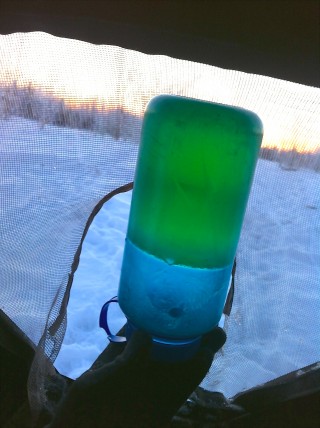 The joys of spending long periods of time in a hide means that, eventually, nature calls. Answering that call at -30C when you have 8 layers of clothing on and have lost all sensation in your fingers is one of life’s small challenges. I’m sure you have never wondered what happens to a pee bottle at sub zero temperatures, but here’s a photo just in case you did.
The joys of spending long periods of time in a hide means that, eventually, nature calls. Answering that call at -30C when you have 8 layers of clothing on and have lost all sensation in your fingers is one of life’s small challenges. I’m sure you have never wondered what happens to a pee bottle at sub zero temperatures, but here’s a photo just in case you did.
We also used thermal cameras to film hibernating Arctic Ground Squirrels at the University of Alaska. These innocuous looking animals are, in fact, one of the most extraordinaliry weird creatures on earth. What they do during the course of their 270 day annual hibernation is utterly amazing and there is nothing quite like them. Their bodies cool to nearly -5C (holding a mammal that actually makes your hands cold is very odd), sections of their brains die, they breathe once a minute and their heart beats once a minute. They rouse themselves every couple of weeks, just up to normal operating temperature for a few hours, before descending back into this state of extreme torpor. We are still trying to unlock exactly what’s going on with this species – the physiological processes that go on inside an Arctic Ground Squirrel could allow us to deal with everything from degenerative brain diseases to long distance space travel.
It was a really great shoot – long and hard work, certainly not much sleep and the odd disaster (Tuppence broken finger, burning Jonathan’s truck – sometimes the Film God demands sacrifices) – but a great team. Huge thanks to Tuppence, Joe, Jonathan, Rick, Glen Haasl and Dr Buck for making it all work.
While I was away one of my favourite musicians – Jim Hall – died aged 84. Jim was one of the cornerstones of jazz guitar, producing beautiful and relevant music for over half a century. His music was a sublime mix of intellect and emotion, a brilliant accompanist, soloist, writer and arranger – and seemed to be one of the most humble and lovely humans you could ever meet. I love all his work, my particular favourites are the two albums he did with pianist Bill Evans (Undercurrent and Intermodulation), the brilliant Live! and his album Concierto is absolutely divine – put it on your Christmas list.
A very Merry Christmas to everyone, I hope 2014 is fruitful, peaceful and happy. Love from all of us.
